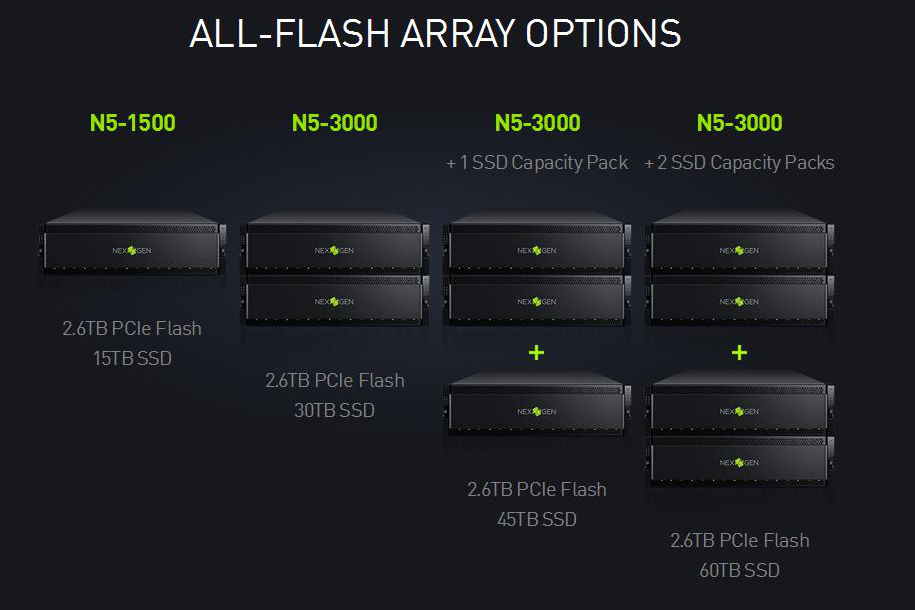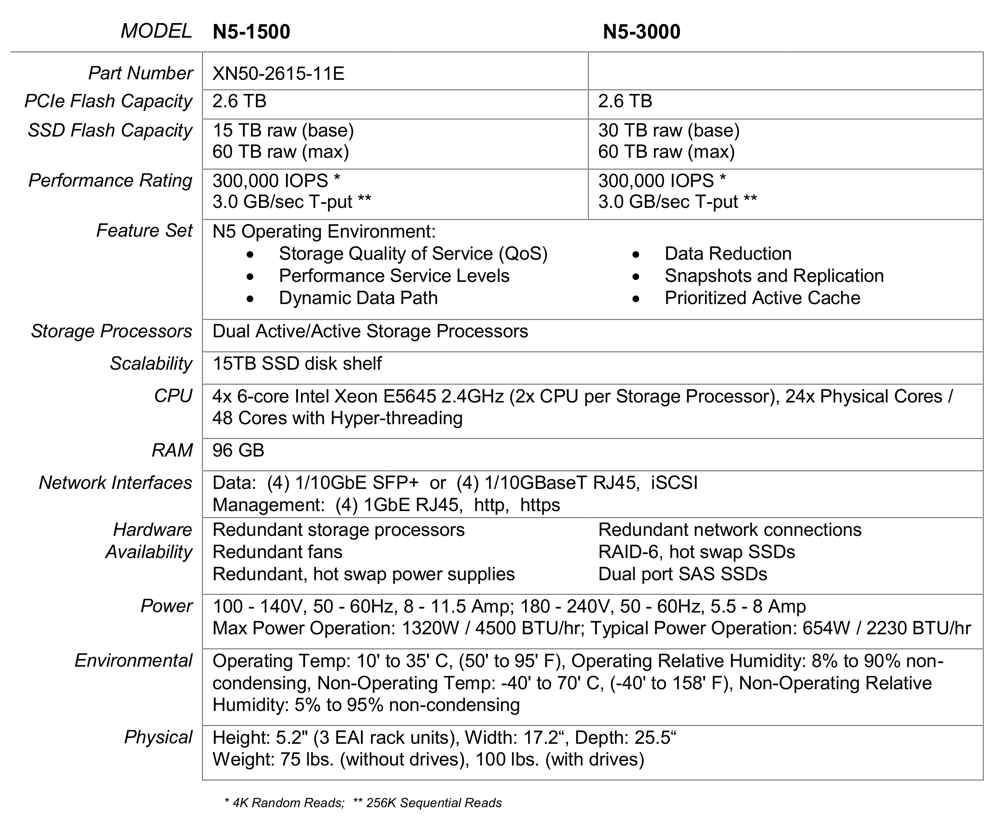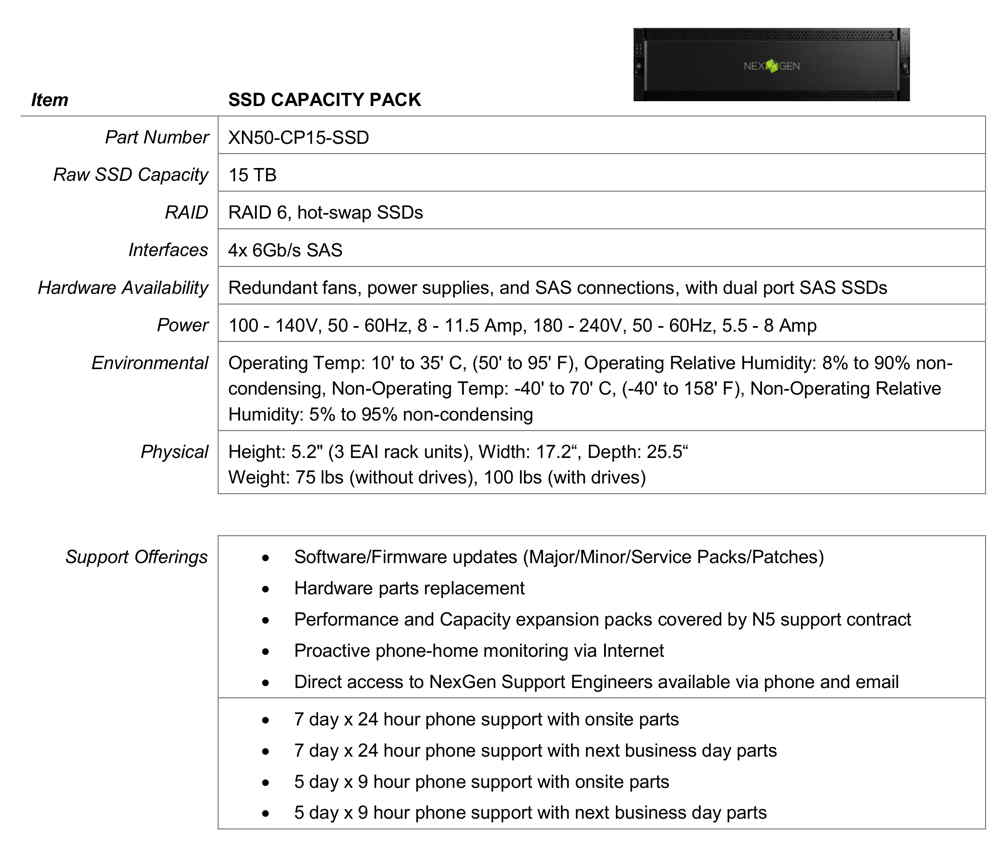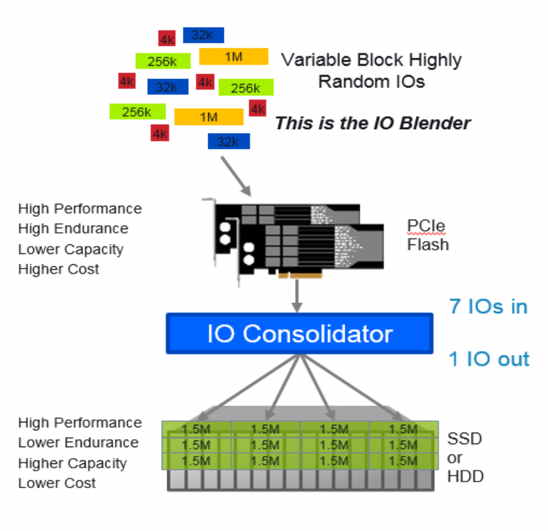NexGen Storage Delivers Multi-Tier All-Flash Array With Predictable Performance
Utilizes multiple tiers of flash storage - RAM, PCIe flash, and SSDs.
This is a Press Release edited by StorageNewsletter.com on November 20, 2015 at 2:54 pmNexGen Storage, Inc. announced a multi-tier, all-flash array with dynamic QoS.
The company’s N5-1500 and N5-3000 all-flash arrays utilize multiple tiers of flash storage – RAM, ultra-low latency PCIe flash, and high capacity SSDs. Company’s dynamic storage QoS allows customers to avoid unexpected latency spikes and resource contention inherent in every all-flash array. By governing performance targets, I/O prioritization and data placement, Storage QoS guarantees company’s customers meet all mission-critical application SLAs.
Click to enlarge
Click to enlarge
The NexGen N5-1500 and N5-3000 multi-tier all-flash arrays with storage QoS are for mission-critical application environments that require consistent, predictable high performance and low latency, such as storage for virtual servers, large scale VDI and database applications. These environments also benefit from company’s data reduction technologies that provide multiple advantages including 4x life extension of SSDs, 2.5x performance improvement and a 2x data reduction ratio with no performance impact.
NexGen data reduction
“The business expectations of mission-critical and business-critical applications within today’s data centers are quickly making Storage QoS a requisite capability, even with all-flash arrays,” said George Crump, president and founder, Storage Switzerland. “Unpredictable latency spikes and resource contention need to be managed in a shared storage system – and one of the most effective ways is with a dynamic QoS system that is designed to manage performance targets, I/O priorities and data placement to ensure business priorities are met.“
Company’s multi-tier architecture provides investment protection, is compatible with future technologies such as NVMe, 3D Flash, ReRAM and other storage-class memory technologies that will be introduced in the near future, and ensures compatibility with next-generation flash devices from industry leaders such as Intel, Micron, SanDisk and Samsung. Company’s capability to dynamically tier data across different memory technologies allows its QoS engine to not only optimize performance based on application requirements, but also enables the company to deliver better cost/performance economics versus companies that have designed their systems around a single type of flash memory technology.
“I love NexGen PCIe flash arrays for both the performance and reliability of the product,” said Tor Roberts, director, IT, SSCS, Inc. “We benefit from the performance of PCIe flash today, and NexGen’s architecture also offers investment protection – the all-flash array lets IT departments like us take advantage of multiple types of flash in one array, including new flash technologies coming to market over the next 12 to 18 months.“
By enabling the use and application of multiple storage performance policies on a single company’s array, customers can eliminate the cost and complexity of managing multiple storage silos. With superior integration with vSphere Virtual Volumes (VVols), company’s all-flash and hybrid arrays provide the ability to easily apply pre-defined performance policies at a VM-level using vCenter Server and to change performance policies in real time with no vMotion data migration required.
Storage Switzerland solution brief: Addressing the All-Flash Wall



















 Subscribe to our free daily newsletter
Subscribe to our free daily newsletter

